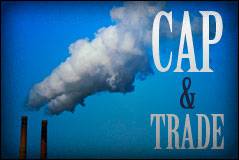Media
EPA Regs Kill PA Jobs
 Cap and Trade may be officially dead in Congress but the EPA is busy resurrecting it in a far more disastrous policy agenda that kills thousands of Pennsylvania jobs and send electricity rates through the roof.
Cap and Trade may be officially dead in Congress but the EPA is busy resurrecting it in a far more disastrous policy agenda that kills thousands of Pennsylvania jobs and send electricity rates through the roof.
The first of these regulations is called the Cross-State Air Pollution Rule (CSAPR). Finalized on July 7th, the mandate will affect coal and gas fired electric plants in 27, mostly eastern, states by reducing the transport of pollutants, like Sulfur Dioxide (SO2) and Nitrogen Oxide (NOx).
In Pennsylvania, power plants must reduce emissions of SO2 by 33 percent and NOx by 10 percent in the next six months. The mandate ignores the reality that major power plant systems are required to reduce emissions, like scrubbers, which could take more than four years from design to installation to accomplish.
On top of an unreasonable timeline, the EPA is trampling over state sovereignty by skipping the traditional State Implementation Plans and directly imposing federal rules on utilities, which some believe is a clear violation of the law.
Why rush when industry is already complying with current standards to reduce pollution? According to U.S. Energy Information Administration, the US cut SO2 emissions 50 percent between 2000 and 2009. And NOx emissions have been cut from 5.6 million to 2.3 million in the same time.
The CSPAR rule along with another regulation, called the Utility MACT rule, is estimated to cost 59,000 jobs in Pennsylvania from 2013 to 2020 and increase electricity rates by an average of 13 to 17 percent as utilities shutdown or idle plants to meet emission requirements.
Nationally, the Brattle Group found that the cost of investing in scrubbers and Selective Catalytic Reduction units across the country could run up to $120 billion by 2015. Even the EPA’s extremely conservative cost estimate indicates that the price could be $2.8 billion annually, with $2.2 billion borne by consumers each year.
The only justification for these measures is a bunch of highly speculative and so far unproven death statistics that will undoubtedly wreak havoc on the energy industry.